This will be more of a post on impressions, with, as Arlo Guthrie says, with feeling.
Tonight’s subject, one of those one in a million “ginseng” ficus I’ve talked about before. Put “ginseng ficus” in my search function and you’ll see some interesting trees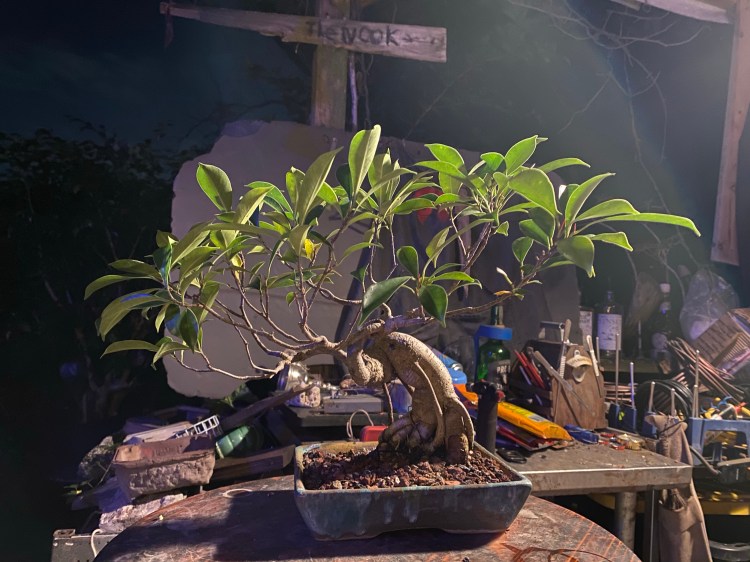
In a Josh Jeram container too.
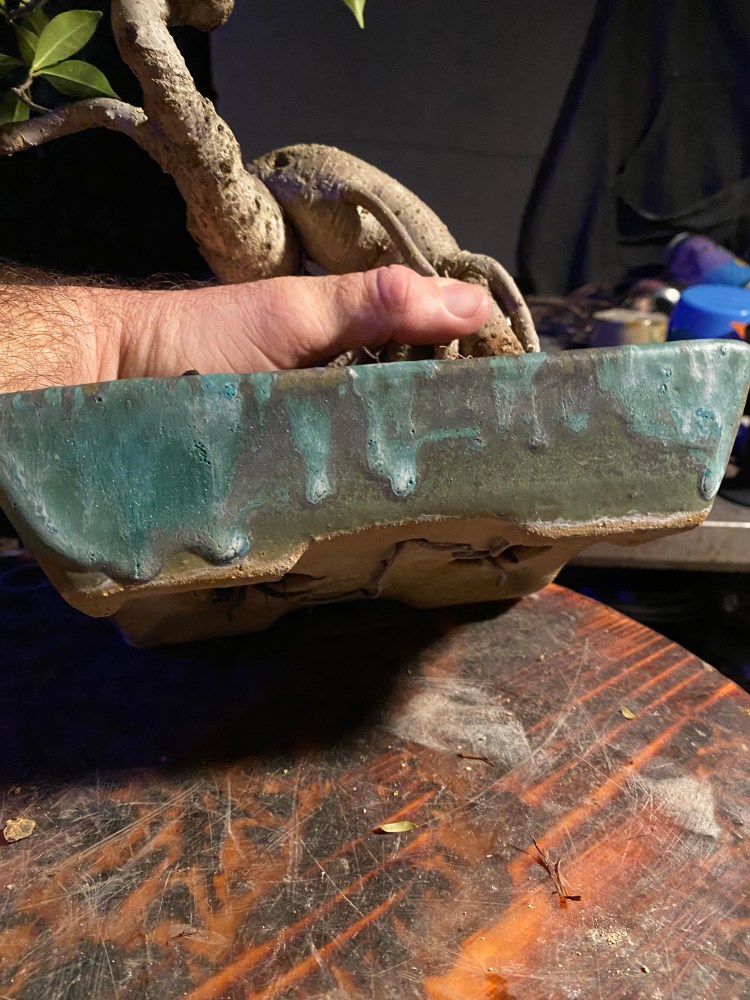
Josh is becoming one of the best and, importantly, accessible American potters.
 The leaf of the ficus microcarpa var. microcarpa (the example of the species. It’s a difficult species to work with as it can be prone to dieback if you don’t prune to an active node, so you gotta pay attention)
The leaf of the ficus microcarpa var. microcarpa (the example of the species. It’s a difficult species to work with as it can be prone to dieback if you don’t prune to an active node, so you gotta pay attention)
The leaves of the ficus microcarpa var. microcarpa all over the work stand.
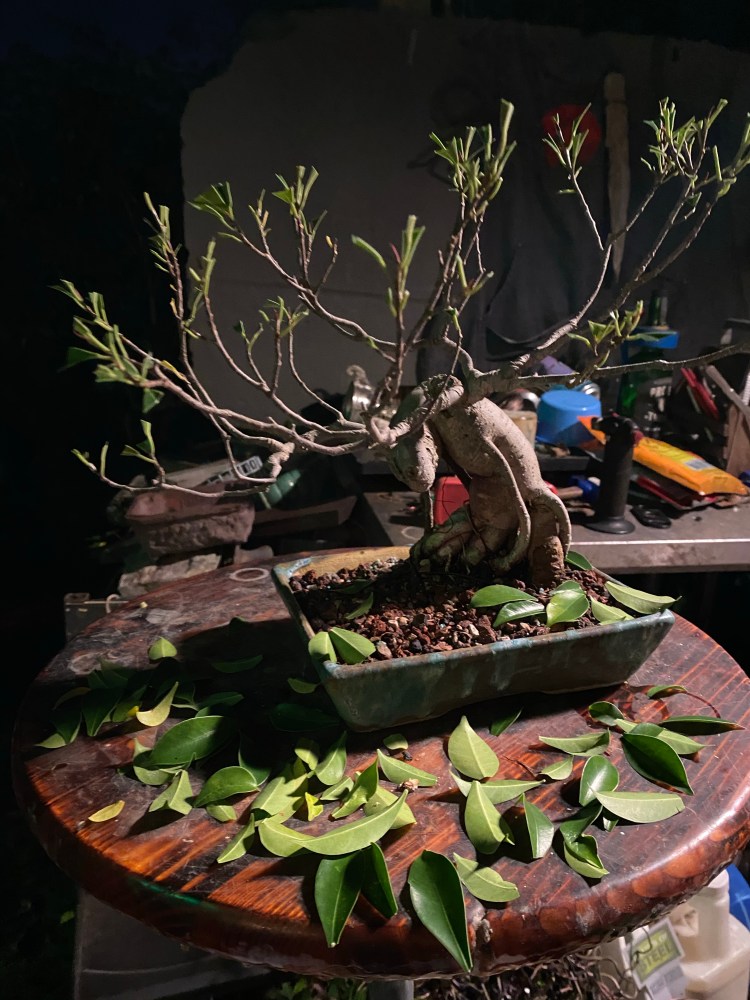
“How much of the leaf do you cut off when you defoliate?” I get this question all the time, so I’ll answer it here: like below, I’ll leave the petiole (leaf stem) intact and if there’s any of the leaf structure left, I cut off at least 90% of it. But I don’t tend to do that on purpose. The reason I don’t just rip the whole leaf off is because there’s a dormant bud between the petiole and the branch, and I don’t want to destroy it, and the tree will abort the old leaf (the action of the hormone xylene) in turn stimulating that dormant bud into growth. That bud becomes not just a new leaf but a whole new branch (which is why defoliating increases branch ramification) but if the bud is damaged (or cut off) it won’t do that very well or at all.
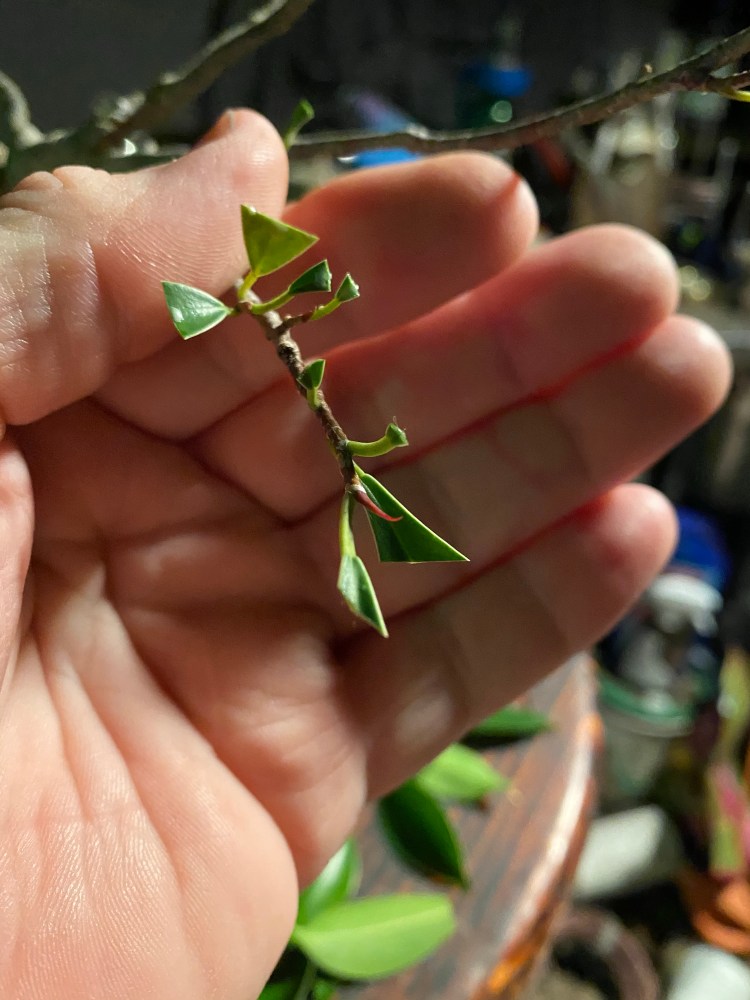
That pointy thing (below, between my ficus stained fingers) at the end of the branch, what I call the grow tip, is called the stipule. In the case of a weak branch I never cut it off. But if the branch is strong I’ll cut it back to a strong leaf to stimulate backbudding (cutting the tip removes auxin, the hormone responsible for branch elongation, among other things, and allows the cytokinins, which are being held back by the auxins. Cytokinins are the hormones responsible for stimulating secondary branching, and in the absence of auxins, they become dominant, until the auxins can repopulate the new branch tips, which makes them into elongating. Check out THIS article on the role of hormones and plant growth. Too many people believe that energy (sugars) or fertilizer cause plants to grow. It’s the hormones that are the primary movers of growth, often causing a plant to die by using all the stored energy a plant has because of a hormone induced growth spurt. Wanna test it? Go ahead and keep working a deciduous tree during the Winter, keeping the light, warmth, and fertilizer going, and the tree will be dead in two years. It seems that deciduous trees only make or store enough energy for a few growth spurts (a flush, as it is known).
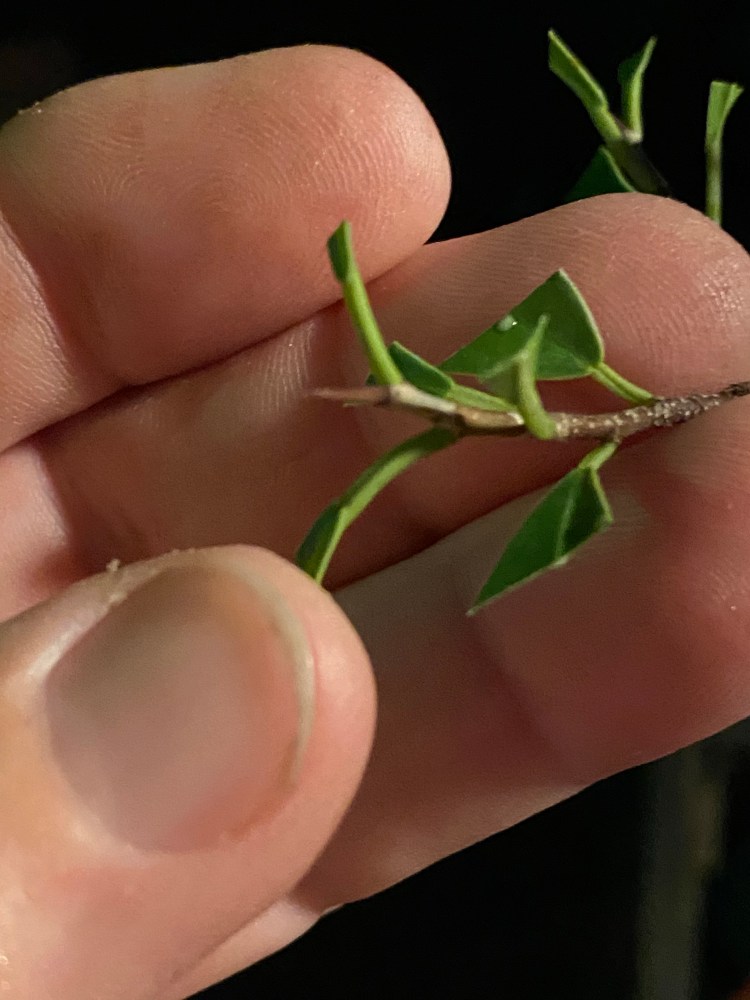
Actually, my fingers aren’t that dirty, yet.

Why defoliate? After a defoliation, we can see the branches, we stimulate growth, and we can wire more easily.

Some wire….
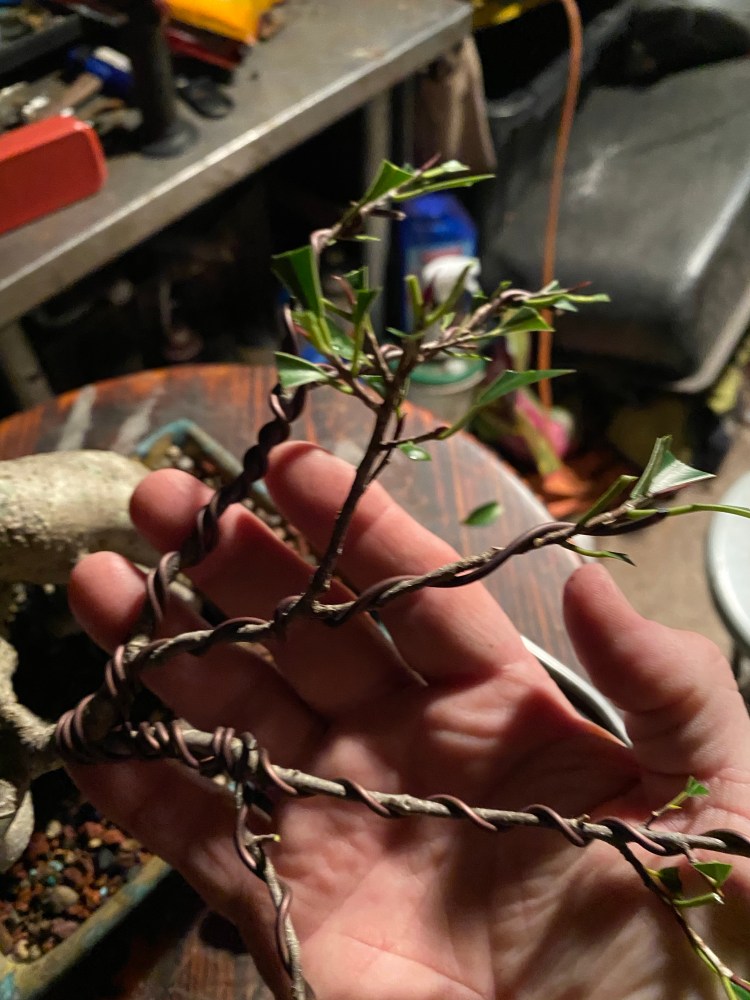
A little more….
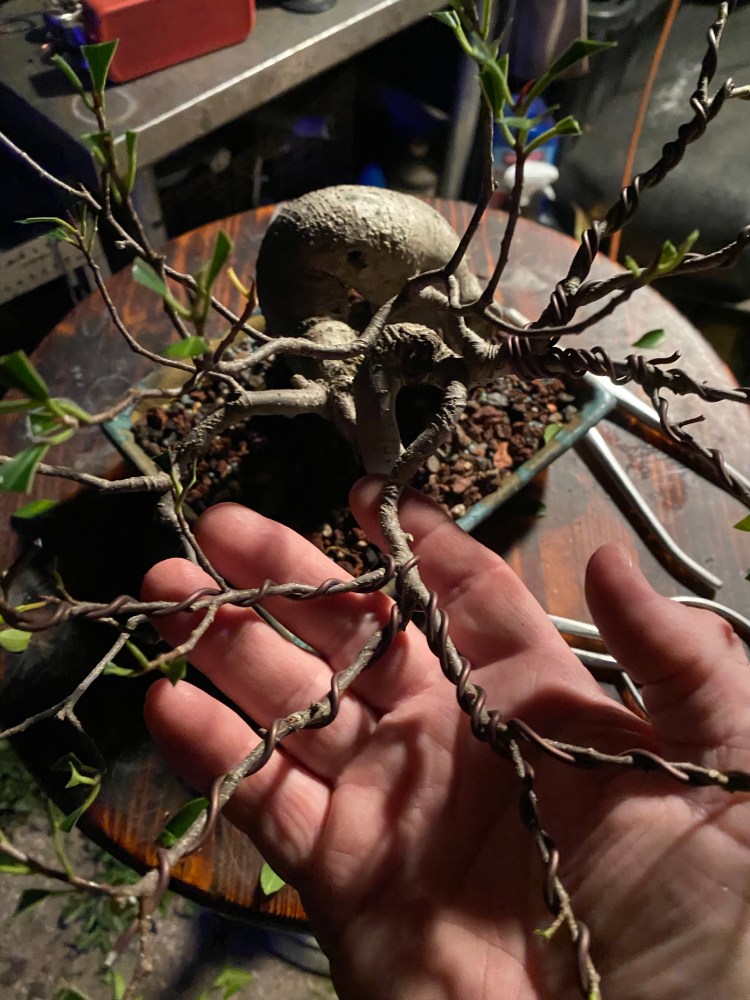
Wire applied, before shaping…
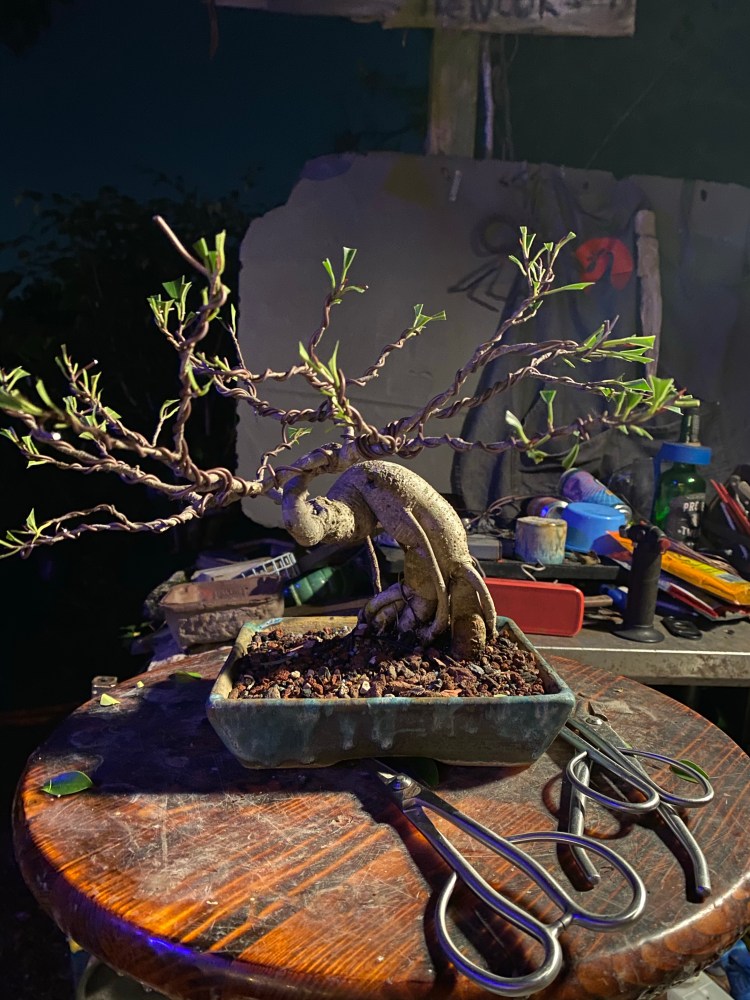
And after shaping. 
After I shape, I’ll finally cut back some of those grow tips.

I’ve said this before, and obviously I’m saying it again:
“Horticulture is a science, but the practice of horticulture is an art.”
I’m always pushing my trees hard, because, after experimenting, reading the published scientific studies, and watching what other bonsai artists in my circle do, I know I can and get results. And further, my practice in hitting the trees this hard, in winter, and getting the results I expect, makes me believe I am using correct techniques. I could be deluding myself too, of course.
Other bonsai practitioners, using less harsh, or sometimes more harsh, techniques, can, and do, have similar results. As my first teacher told me:
“Sometimes we don’t know why a tree does what it does”.
Therefore, you can have two almost seemingly contradictory techniques work.
Figure out what works for you, because:
“Believe those who are seeking the truth. Doubt those who find it.”
– Andre Gide

Ed Trout has said,
“Each person is the bonsai master of their own back yard”.
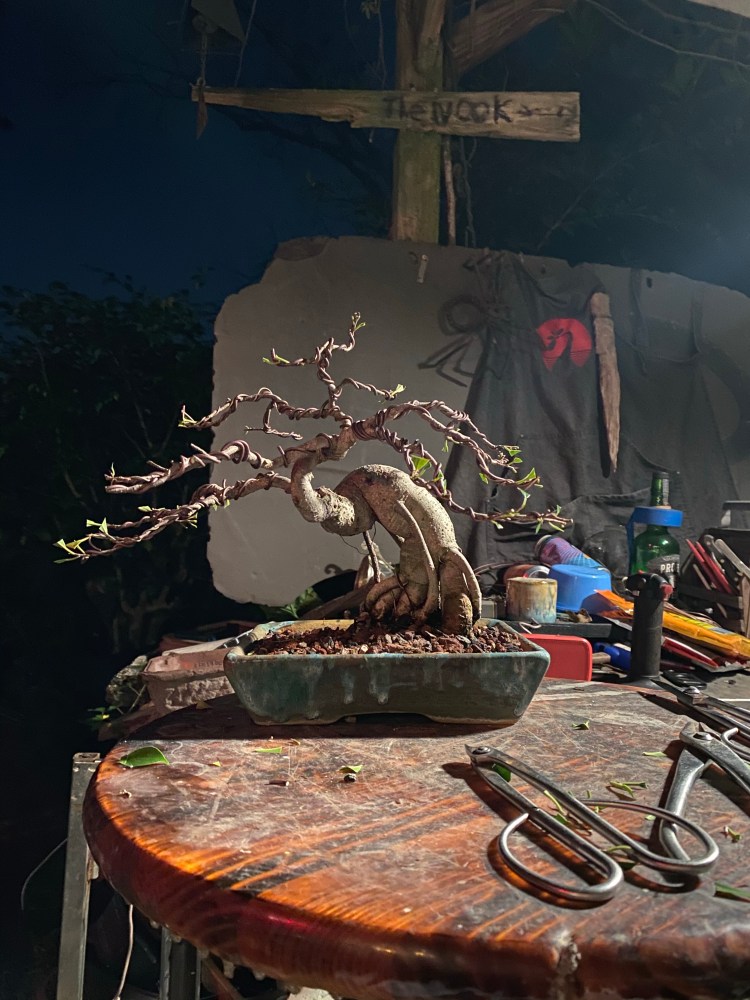
I’m always seeking new knowledge and I will change what I think and believe when I see new research and studies. That’s how science works, it’s always changing as new techniques for information gathering become available and knowledge that is suppositional (if this is true, we suppose that this must follow) is either disproved or confirmed.
A short video to annoy your friends, family, and co-workers (who aren’t working these last two weeks of the year anyway, admit it)
And a dramatic shot for the Instagram set.
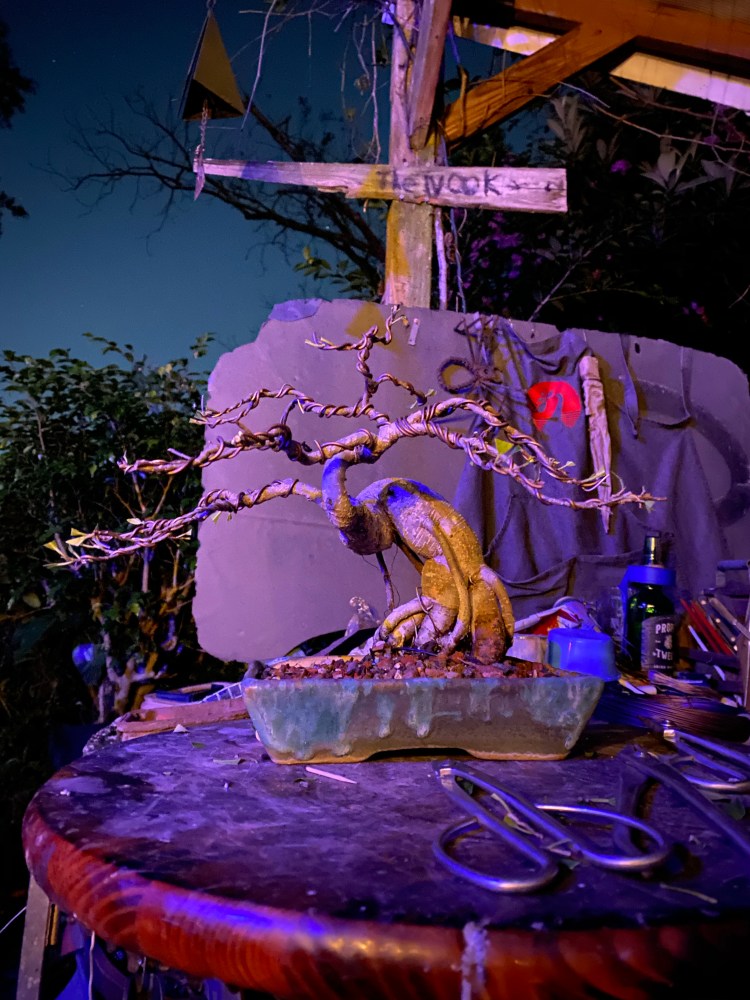
Happy holidays, stay safe and peaceful my friends.
Happy Christmas Adamaskwhy!
As always, you’ve entertained and informed and piqued my curiosity in this weird year. Let’s bonsai our way into the next one, wire in one hand, whisky in the other and an eyebrow raised in questioning fervour!
LikeLiked by 1 person
This is not a bonsai. It’s a (wired) ficus in a pot.
LikeLike
Greetings and merry Christmas wishes from Belgium
LikeLiked by 1 person
You too be safe, Adam, and have som happy Holidays with your family! Glad to have shared your knowledge throughout this year, and hope for many more to come. Cheers!
LikeLiked by 1 person
Merry Christmas
I like the set up and the vampire steak
Nice tree and pot
LikeLiked by 1 person
The trunk silhouette reminds me of a weeping Buddha. It is a beautiful tree.
LikeLiked by 1 person
Lovely post… any chance of some pointers for an overgrown white pine?
LikeLike
Well, assuming it’s the pinus parviflora, or Japanese white pine you’re asking about, they don’t grow here in Florida, so I can only give you general advice.
I know they only push growth once a year, so it’s a long process to get backbudding unless you know how to graft. Wiring is a definite way to tame some growth, but it takes a long time to set a branch.
I would seek out Bjorn Bjorholm for more specific advice, as he’s probably one of the best in the country on that tree
LikeLiked by 1 person
Thank you, I will do that…
LikeLike